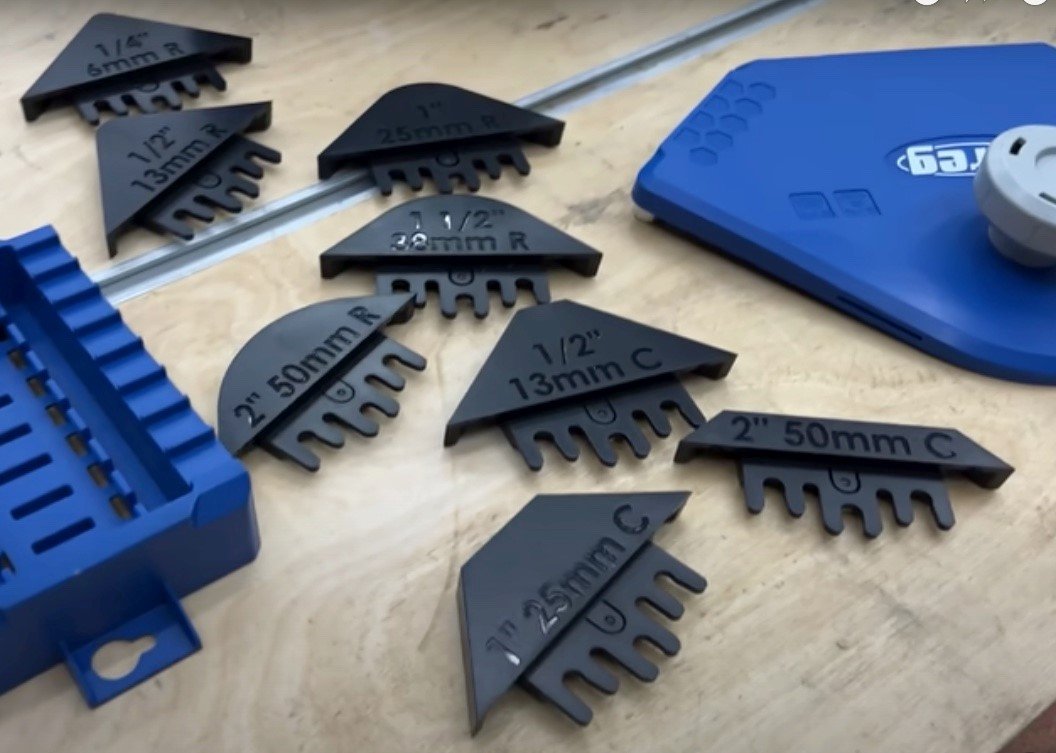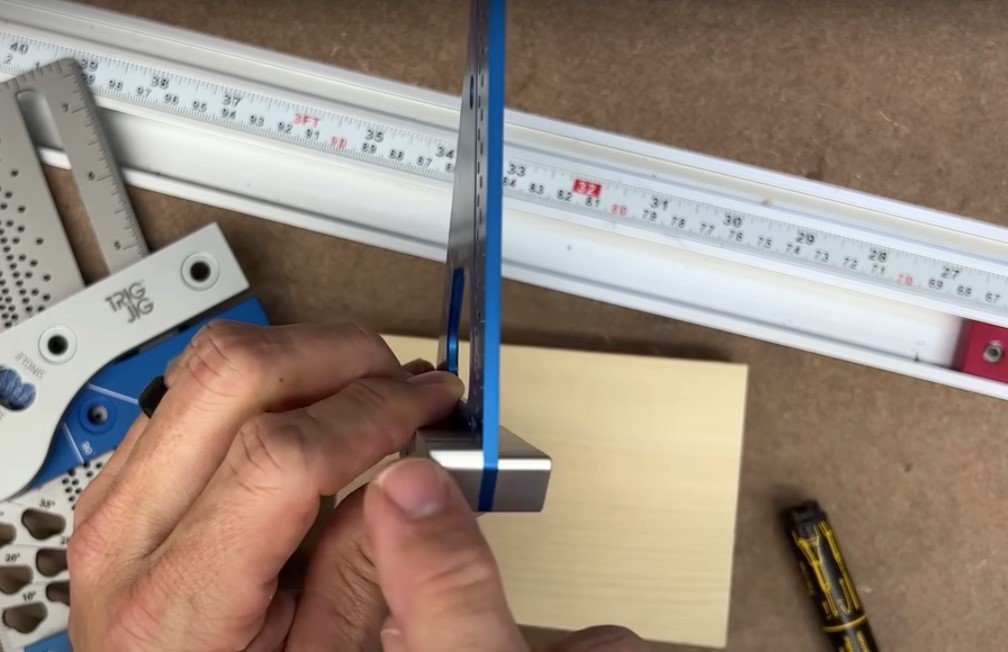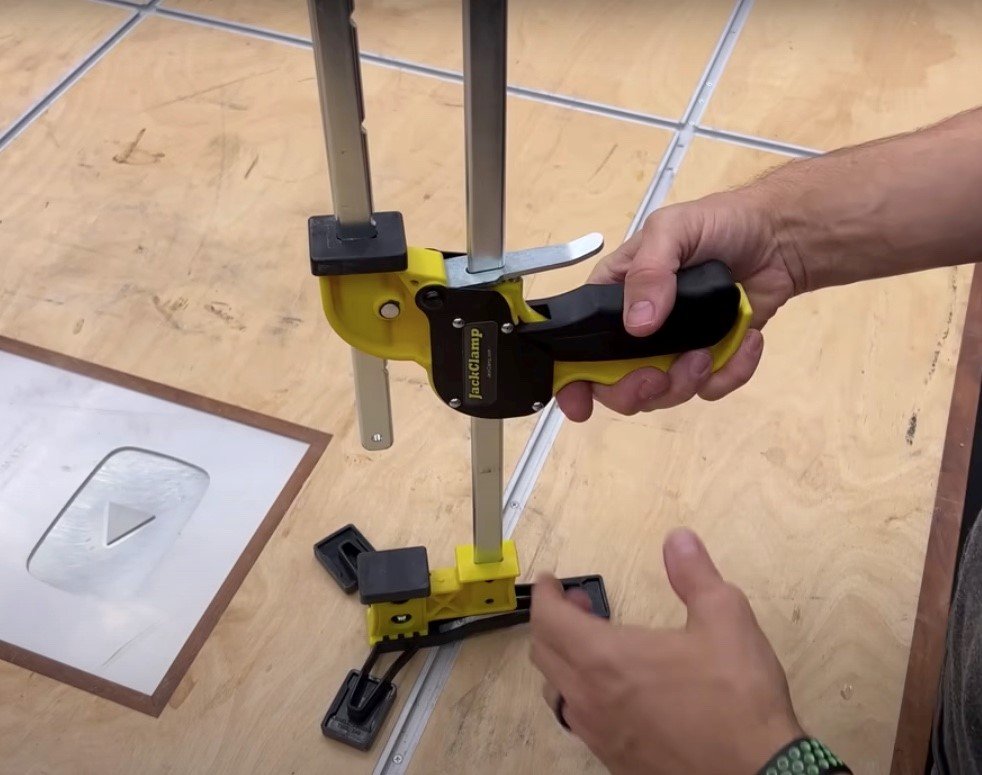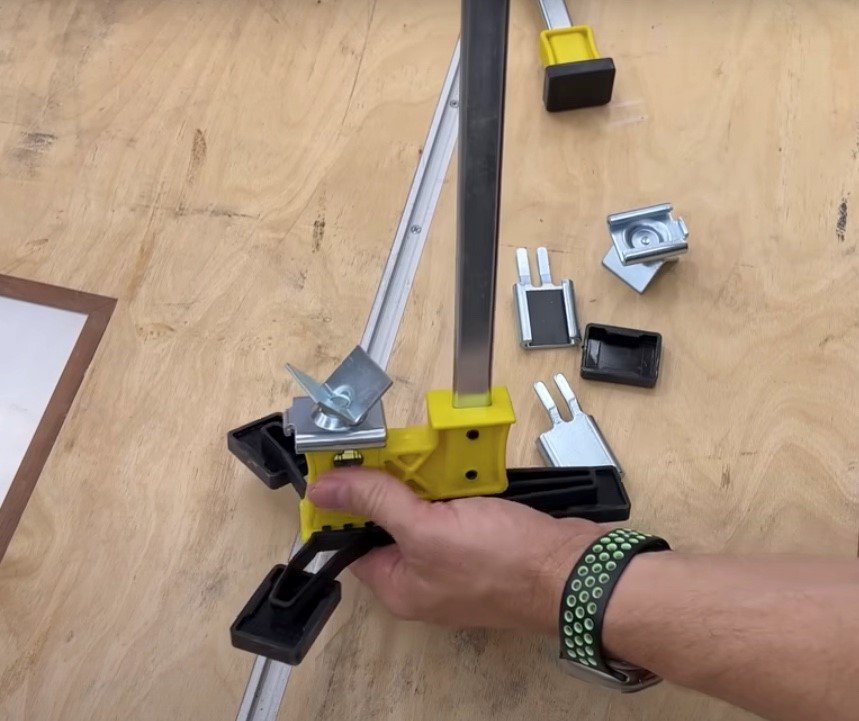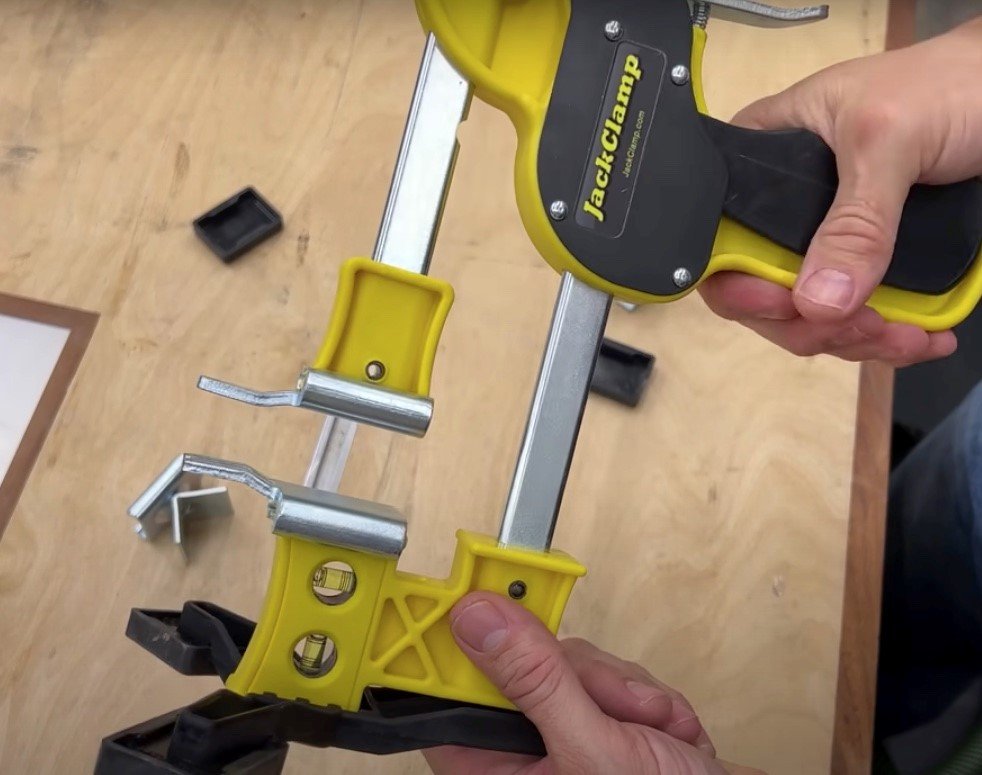5 Woodworking Tools You've Never Seen Before!
I found five awesome tools that you may not have ever heard of before. Check them out below and let me know which one is your favorite!
Affiliate links are used on this website to help support this website. For more information, read our affiliate disclaimer. The only tool on this list that I did not buy myself was the JackClamp, which was sent to me to try out.
#1 – Kreg Corner Routing Guide Set
Buy here: https://amzn.to/3ocotHn The Routing Guide Set is a brand-new tool from Kreg. It’s one of those tools that I think is a game changer, especially if you don’t have a router table. A lot of times when you’re making projects like cutting boards, charcuterie boards, tabletops, things like that, you want to put a round or chamfered corner on them. This is an easy way to do it.
Multiple styles and radiuses in one jig
The kit includes radius guides from ¼” up to 2”, and every ½” in between. You also get three chamfered corners at ½”, 1”, and 2”. I do wish there was more selection between the ½” and 2” chamfer, but you do get five round corners, which most of us will be using anyway. There’s also a nice case to store the guides in so you won’t lose them. You can keep them at the router table, or in a shop drawer.
All you need is a flush-trim bit, which is sometimes called a pattern bit. I like the 4-bit set from Whiteside. It’s got two flush-trim bits – one with a bottom bearing and one with a top bearing – as well as a round-over bit and a chamfer bit. They’re four of the most common bits you’re going to use, and these are excellent bits. They’re going to last you a very long time.
Similar radius jigs require you fingers to be very close to the spinning bit
Kreg radius jig provides a handle to keep your hands safely away form the cutter.
A lot of radius jigs require you to hold them with your hand right next to the edge of the jig itself. The Kreg jig has a knob to hold the jig, so your hand is away from the router, and you can also swap the guides out. The guides just snap right into place on the jig, and quite securely, too. The posts on the underside also adjust if you need to get closer to the edge. If you don’t want to hold it, a face clamp will be perfect to hold the jig in place. If you’re using a hand-held router, you want to use the bit with the bearing that’s closest to the router so it will ride along the edge of the corner radius template. If you’re using it on the router table, you’ll use the bit with the bearing on the end of the bit.
#2 – Detail Sanders
Rikon Sander: https://amzn.to/3zU4DD5
Milwaukee Detail Sander: https://shrsl.com/40vjl
I’ve actually done full reviews of both the Rikon detail sander/polisher and the Milwaukee M12 orbital detail sander. The Milwaukee does have a 1.5mm orbital head on a home plate-shaped base. You’ll be able to get what Milwaukee calls a stain-quality finish, which means you shouldn’t have any of those circles in your finish. The Rikon and the Milwaukee are two different tools, though they do have a similar operation.
side by side picture
The Milwaukee has four speed settings in the head, and the trigger is also a variable-speed trigger, which I really do appreciate. The Milwaukee comes with a ton of accessories that I really like. You get the tool, the battery, the charger, a pad saver (which I recommend your using all the time), a variety of sanding discs from 80-grit up to 180, plus the contour pad for edges.
I really like the Rikon for $100. This is a great little sander that you can do a whole bunch with. There’s really no alternative out there for a detail sander that’s not multiple hundreds of dollars, so this is just a good value. The problem is trying to get into corners with the Rikon’s round head. While it’s an amazing little sander, and it takes off material really well, I really love the Milwaukee sander. You can really tell the difference in the build quality. I find myself picking up the Milwaukee sander all the time.
I like that Milwaukee includes the contour pad because a lot of stuff I make has roundovers, chamfers, and things like that. The last thing you want to do when you’re getting close to finishing is you don’t want to break those corners or cause a flat spot. This pad will contour to those edges and corners. You can use a higher-grit sandpaper and adjust your speed to keep those roundovers without breaking them down.
#3 – Trig Jig Squares
Buy a Trig Jig Micro Trim Square Here: https://trigjig.us/products/micro-trim-square-mts-4
Trig Jig makes some really cool premium products, similar to the Woodpecker line. Trig Jig is made in Great Britain, but they ship to the United States for free. Full disclosure, I have no affiliation with them. I get nothing out of talking about them other than I just think they’re very cool.
They make one of my favorite smaller squares. It’s a little bigger than the Woodpeckers, and I actually like that it’s a little bit bigger. It has some unique features on it that you’re not going to see anywhere else. For one, all of the markings are recessed, so they won’t wear off. The blade on the bottom is offset, so you can use the holes in it to make 1/16” marking if you use it on one side, and 1/8” markings if you flip the square over and use it on the other. The blade also has a 45-degree bevel. That’s great for using the square inside boxes or anything that has an inside roundover in the corner. The bevel won’t interfere with the roundover. I really like that feature. It’s an extremely accurate square, and it’s anodized aluminum, so it’s very lightweight.
There’s also the Trig Jig Angle Finder 4. Buy yours here: https://trigjig.us/products/af4-angle-finder I love this thing. It’s my favorite angle finder versus something like a t-bevel. It seems like with the t-bevel, I would set the angle, then the blade moves too easily. I love that the Trig Jig Finder reads the miter angle, single miter, and protractor angle all at once. When you start setting angles, whether for furniture or other build projects, you can set your angle then go to the saw and set your angle up exactly like it needs to be. It holds its position once you set it. It’s not so stiff you can’t move it, but it’s stiff enough that it holds the angle, unless you bump it of course. On normal everyday use, this thing is awesome.
I think these are very unique tools that are very well-made and are on-par to the Woodpeckers line. If you know the quality of that line of tools, you’re getting the same quality with Trig Jig.
#4 – Jack Clamp
JackClamp can only be purchased through their website - https://www.jackclamp.com/products/cabinet-jack-kit-1
The Jack Clamp is made in the U.S.A., and it was sent to me by Jack Clamp quite a while ago. This is a clamp, and a spreader, and a jack all in one. It will jack, or hold, up to 300 pounds. It also has a lifetime warranty from defects, and if you don’t like it in the first 30 days, they’ll give you your money back. The squeeze handle reverses so you can use it to either spread or hoist. You can also use it as a traditional squeeze-clamp. There’s an adjustable bar in the head of the squeeze-handle to give you more room for whatever it is you’re trying to do.
There are a number of attachments for the foot. There’s a v-channel attachment that will allow you to clamp round stock. There’s also a spreader attachment, so if you’re doing decking or things like that, it’ll fit between the decking and spread those out.
This is a very well-made clamp. Everything about it feels nice and robust. The metal is thick enough that it’s not going to bend on you, and you can really feel how well this is made in the handle’s squeeze action. There’s no slop in it.
One thing I find useful about this is the foot attachment that allows the clamp to stand up on its own. What will that be good for? If you’ve ever built furniture by yourself and you need something to be held up, especially off of your workbench, this clamp is perfect for that. A couple of these in the shop are super handy to have.
It's also worth noting that JackClamp is a small, family-owned business right here in the U.S.A. They don’t sell the clamps on Amazon or anything like that. You have to buy them direct, but you are supporting a small, family-owned business.
#5 – Trig Jig Pocket Square
Buy the TrigJig Pocket Square here - https://trigjig.us/products/psq7-pocket-square
Trig Jig is back on the list with their pocket square, and it has some unique features that you’re not going to find on any other square that I’ve seen. It has slotted holes for marking angles. Why are those holes slotted? They’re made specifically for a carpenter’s pencil, which I really appreciate because you carpenters out there don’t really get a lot of these unique features. Woodworkers get plenty of attention to things they want, but the carpenter’s pencil doesn’t get enough love.
You can mark the line for your angle using the slotted hole then use the base as a pivot point to use the edge to mark the full line of the angle. It does have the round holes for regular pencils just like you would use to lay out parallel lines. I also like the fact that the end-scale goes all the way to the bottom of the base. You can stand this up to use as a guide to set up router bits, blade heights, and many other useful things in the shop. And since it’s a square, you can use it just like any other square.
You can watch the full video review here - https://youtu.be/7v3Jc3xvjFc
Related Articles:
5 More Tools You’ve Never Seen

